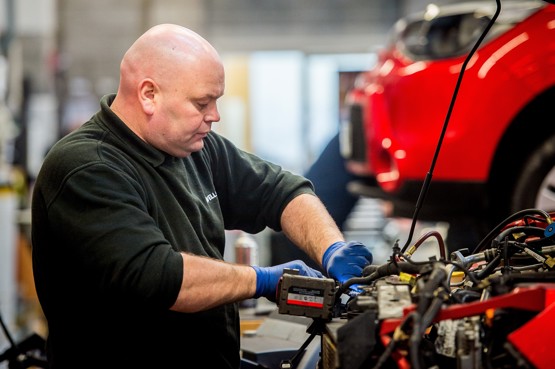As dealers have fewer opportunities to sell used cars in volume due to the supply constraints and gaps on their forecourts, so the onus must be on sales staff to identify a customer’s pressing needs when they do appear ready to buy.
When times are toughening some cost-conscious consumers may value the peace of mind that service plans or extended warranties can offer even higher.
Recent research of dealers by Startline Motor Finance found almost six-in-10 are selling older cars than they have done typically, and some of these are finding customers need more convincing despite reporting that warranty claims are slightly more common.
“The situation means that dealers are experiencing issues,” says Startline chief executive Paul Burgess.
“Some of these are around the need to reassure customers that an older vehicle remains a good buy – concentrating on presenting a well-prepared vehicle with a sound service history.”
Sales executives doing the basics brilliantly will pay off. Whether online or on-site, conversations about their current car can help to build a picture.
 Finding out whether a customer had extended warranty, where they took it for servicing and how they afforded MOT repairs can all give important clues as to their disposition towards managing running costs and their attitude to risk – and hence their likelihood to buy add-on products that can boost profit-per-unit by tens, even hundreds, of pounds.
Finding out whether a customer had extended warranty, where they took it for servicing and how they afforded MOT repairs can all give important clues as to their disposition towards managing running costs and their attitude to risk – and hence their likelihood to buy add-on products that can boost profit-per-unit by tens, even hundreds, of pounds.
Lee Coomber, RAC sales agent director at Assurant, which partners with the RAC in the dealer and aftersales sectors, says car retailers need to identify ways of providing reassurance to customers who were being offered older vehicles at historically high prices due to stock shortages at a time that sees their personal finances stretched.
He says customers are looking for a high level of protection against the possibility of unexpected expenses, especially as they could be buying a car that is older and with higher mileage.
CONSISTENT PROCESSES
The network recommends that dealers offer a more comprehensive and longer warranty, either as standard or as part of an upgrade path, alongside an additional focus on service plans.
Coomber adds: “It’s important to realise that, at times such as these, customers are often actively looking and are willing to pay for higher levels of protection.
Warranties are, to a great extent, a countercyclical product that often sees strong levels of sales during times when economic conditions are difficult.”
He says: “The common theme we hear from dealers is that motorists don’t want to be in a position where they are having to find large, lump sums. Paying for servicing falls into this category. Service plans help customers to spread the cost of maintenance in a predictable manner over time.”
Sales executive who let a buyer drive off without having presented the benefits of service plans are failing the business, warns Neil Addley, managing director at JudgeService.
He says: “For franchised dealers, retaining servicing work is every bit as important as making the initial vehicle sale, yet some dealers run the risk of losing invaluable aftersales business forever by not offering service plans with every car they sell.
“Dealers with processes in place to consistently offer service plans reap the bottom-line benefits and with shrinking markets for new and used car sales, every opportunity to sell them needs to be maximised.
 “Servicing gives dealers the opportunity to build lasting relationships by delivering the best possible customer satisfaction, build retention for future car purchases and drive more profitability across the business.”
“Servicing gives dealers the opportunity to build lasting relationships by delivering the best possible customer satisfaction, build retention for future car purchases and drive more profitability across the business.”
Such an approach is vital because the automotive retail sector’s used car shortages “will stick with us” for some time to come, Auto Trader commercial director Ian Plummer tells AM.
Used car dealers are in a good position currently though. Plummer adds that Auto Trader data showed motor retailers were “not seeing a calamitous drop-off in demand”, and limited stock availability would continue to deliver strong profit margins in the stock they’re selling.
Plummer adds: “A third fewer cars are flowing into the two-year, three-year-old parc. The year-old parc is lower than it was pre-pandemic, because we didn’t build the cars. We can’t make a three-year-old car, so that problem is going to stay with us and, because it stays with us, it’s almost a good thing because the market is driven more structurally today by supply issues than demand issues.
“Demand is still pretty healthy.”
The dealerships able to profit from sales of useful add-ons as well as the ‘money in the metal’ will be best placed to cope with whatever 2023 brings. TIM ROSE















Login to comment
Comments
No comments have been made yet.